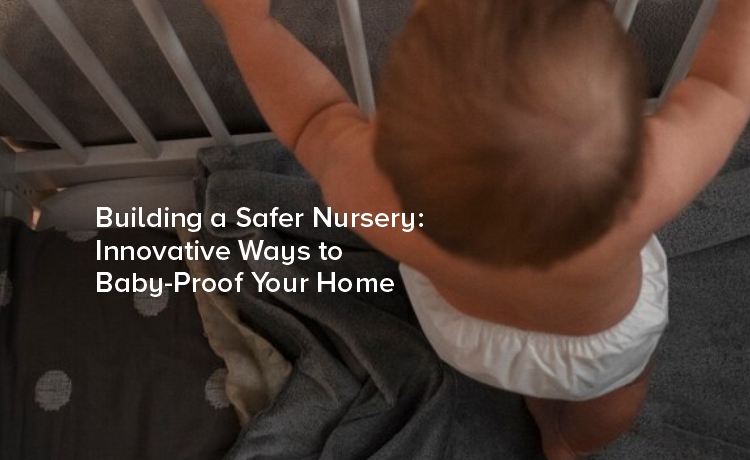
Preparing for a new baby involves more than assembling a crib and picking out cute bedding. Creating a nursery that's both comforting and secure is paramount to ensuring your little one's safety.
Your baby's nursery should be a haven—a place where they are free to explore without danger. From curious fingers to adventurous crawlers, babies have an amazing ability to get into things they shouldn't! A safe nursery minimizes risks, allowing your child to grow and learn in a hazard-free environment.
The first step in babyproofing is to identify potential hazards. Conduct a thorough walkthrough of the nursery and put yourself in your baby's shoes. Look for sharp edges, loose cords, and anything that could pose a choking hazard. Knowing the risks will help you prioritize which areas need immediate attention.
Furniture can be particularly hazardous for curious little climbers. To prevent tipping, anchor all dressers, bookcases, and any other tall furniture securely to the wall. Use brackets or safety straps designed specifically for this purpose. Even if something seems stable, it’s worth securing everything—it only takes a moment for a climbing attempt to turn dangerous.
Opt for non-toxic materials in every aspect of the nursery, from paint and flooring to fabrics and toys. Look for products labelled as VOC-free (Volatile Organic Compounds) as these are safer for your baby’s lungs and overall well-being. Natural materials like cotton, wool, and bamboo are also excellent choices for sheets and blankets.
Electrical outlets are a common curiosity for little fingers. Install outlet covers or sliding socket plates to keep them safe. Ensure that all cords are secured out of reach and use cord shorteners to eliminate slack. For added safety, consider investing in tamper-resistant outlets.
Windows can pose several risks, from falls to strangulation hazards with cords. Secure windows with guards or stops that prevent them from opening more than a few inches. Replace blinds with cordless versions or ensure that cords are tied high out of reach using cord cleats. Window locks are another great addition for peace of mind.
The crib is the centrepiece of any nursery, but it also requires careful consideration. Ensure that the crib meets current safety standards with slats no more than 2 3/8 inches apart. Keep all soft bedding, pillows, and toys out to prevent suffocation risks. Make sure the mattress fits snugly within the crib frame, leaving no gaps where tiny arms or legs could become trapped.
Modern technology offers a plethora of tools to help you keep an eye on your baby. Invest in a quality baby monitor with both audio and video capabilities. Some even offer movement sensors and temperature gauges to provide extra layers of monitoring. Be sure to research and choose a device with reliable reviews for safety and performance.
Fire safety is an essential component of any home, especially where children are concerned. Install smoke detectors and carbon monoxide alarms and test them regularly. Keep a fire extinguisher easily accessible in or near the nursery and ensure everyone in the household knows how to use it. Additionally, work on establishing a clear evacuation plan in case of emergencies.
A clutter-free environment reduces both stress and hazards. Store toys and baby supplies in bins or baskets to keep them organized and off the floor. Regularly sort through items, removing anything your child has outgrown or isn't using. This helps maintain a safe play area and reduces the risk of tripping or stepping on small objects.
Keeping your nursery at a comfortable temperature is important not just for your baby's comfort, but their safety as well. Use a room thermometer to monitor the temperature, aiming for a range between 68- and 72-degrees Fahrenheit. Avoid placing cribs too close to vents or windows, where drafts or heat could pose a risk.
Finally, to ensure ongoing safety, institute regular checks of all baby-proofing measures. Kids grow fast, and what was safe one month may not be the next. Check furniture anchors, replace worn outlet covers, and reevaluate the nursery setup regularly. Making this a routine part of your parenting will help catch potential hazards before they become a problem.
Consider joining groups or forums of parents focused on safety. Sharing experiences and learning from each other can provide valuable insights and support. Together, we can all strive to create safer environments for our children to thrive.
Building a safer nursery involves a mix of foresight, creativity, and innovation. By taking proactive steps to baby-proof your home, you're not only protecting your child but providing them with a secure foundation for exploration and growth. Remember, the goal is a balance between safety and allowing your child the freedom to explore and learn.